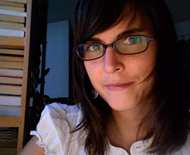The Catholic Fellowship of NYC, the only group out of 45 Catholic young-adult groups in the New York City area that was established not as part of a geographical parish but specifically as an online community, offers its members very limited avenues for participation and interaction on the Internet. Instead, founder Toan Chu says the organization primarily uses the Web to "recruit potential members and post and coordinate events." The group has an informational website in addition to a sizeable presence at Meetup.com, a site designed to help organize events to create real-life fellowship and social interaction. So while such religious groups are integrating the Web into their religious life as a means of "reaching people very quickly and delivering the message effectively," as Chu puts it, they still maintain tight control over what's being communicated.
Still other sites on the Web function primarily as a venue for virtual religious experience, fitting into what Helland calls "online religion." Unlike Revolution NYC, which is a real-life organization that uses the Internet for both informational and interactive purposes, and the Catholic Fellowship of NYC, which gears its online presence toward practical functions that relate to real-life fellowship, this group focuses primarily on the virtual experience. In many cases, an affiliated institution doesn't exist outside of the Internet. One of the best-known examples of online religion is Second Life, a three-dimensional virtual online world populated by user-created avatars and boasting hundreds of thousands of users and an established religion presence. According to a USA Today article, "Leaders of Christian, Jewish and Muslim sites estimate about 1,000 avatars teleport into churches, synagogues or mosques on a regular basis. Hundreds more list themselves with Buddhist, pagan, Wiccan and other groups." Users can light candles for Shabbat, pray at a Buddhist temple, or even attend a service Webcast from a real church in Oklahoma.
While such interaction has clear religious significance, some media analysts like Hoover remain skeptical of the depth of the cultural influence exerted by purely interactive media like Second Life. "Trying to use the Web to reintroduce a structured religious pattern, even if it's something like a megachurch, seems to be something contradictory to me," Hoover says. "I think the kind of things you get from that formal structure, people would rather do in person. The Web is really a medium which is structured to do other things."
Perhaps the Web is better suited to facilitating religious experiences like the connections that happen on social networking sites, a more communitarian form of online religion. As Hoover observes, "The concern people used to have about the impersonality of the Web -- that by going you'd be anonymous, isolated, and atomized -- definitely doesn't happen anymore. Now people are going to the Web to find other people who think and feel like they do." Anderson of Revolution Church agrees. "Our members are tweeting and blogging," he says, "communicating with one another, which has given them a voice and an opportunity to claim the church as their own. Anything we can do to make the larger voice heard is great, and the Web really gives us a way to do that. It gives a lot more freedom and opens everything up to critique and discussion."
Anderson's words point to the fact that the Web is not only a great resource for seekers, but it also provides a new platform for religious experience. Chances are, as with other online communities, the relationship between the medium and the seekers who use it will continue to grow stronger. As the number of Web users grows, and people become more comfortable with the technology, the ways in which we experience and think about religion will also continue to be transformed. "The Web's too efficient and accessible, there's too much good information, for people not to take advantage of it," Hoover says. "The Web will only increase in significance for religion and spirituality." So while he remains skeptical about the lasting impact of Second Life and other examples of online religion, Hoover believes that religion online will continue to grow.
Christopher Helland anticipated that religious communities would embrace Internet technologies specifically to enhance social interaction and, in doing so, that they would begin to mesh the religion online and online religion categories. As Revolution NYC demonstrates, the recent acceptance of online social networking has begun to dissolve that boundary between the different forms of religious participation on the Web. As users begin to better understand the technology and welcome the idea of virtual communication, and religious organizations themselves become increasingly more accepting of Web interaction, the utilization of social media will grow, further transforming religion's relationship with the online world.





